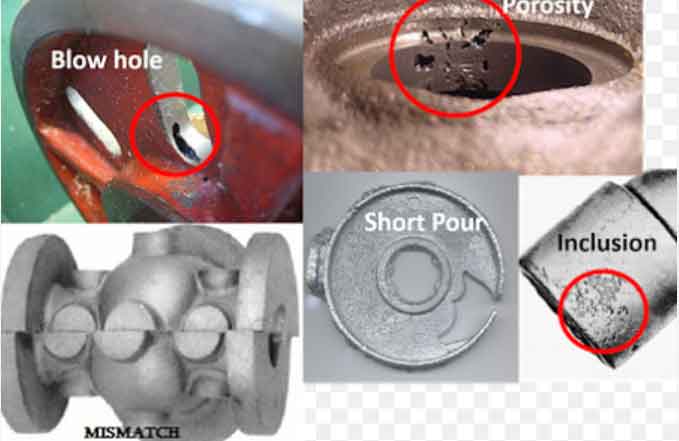Producing defect-free castings is a critical objective in the metal casting industry. Detecting and correcting casting flaws promptly ensures the delivery of high-quality components. This article highlights the best practices for effectively identifying and rectifying casting defects, leading to the production of defect-free castings.

1.Comprehensive Inspection Techniques:
a) Visual Inspection: Conduct thorough visual examinations to identify surface defects such as cracks, porosity, and surface roughness. Adequate lighting and magnification tools aid in detecting subtle flaws.
b) Dimensional Inspection: Utilize precise measurement tools and techniques to verify dimensional accuracy, ensuring that the castings meet the required specifications.
c) Non-Destructive Testing (NDT): Employ NDT methods such as X-ray, ultrasonic testing, magnetic particle inspection, and dye penetrant inspection to identify internal defects without damaging the casting.
2.Quality Control and Process Monitoring:
a) Implement Quality Control Plans: Develop and adhere to comprehensive quality control plans that outline inspection checkpoints, acceptance criteria, and corrective action procedures.
b) Statistical Process Control (SPC): Utilize SPC techniques to monitor and control critical process parameters, allowing for early detection of deviations and timely corrective actions.
c) Real-Time Monitoring: Employ advanced monitoring systems to continuously track key process variables, such as temperature, pressure, and flow rates, to ensure consistency and detect any anomalies.
3.Root Cause Analysis:
a) Investigate Defects: Perform a thorough analysis of the defect’s root cause by examining the casting process, material properties, mold design, and other relevant factors.
b) Process Mapping: Create process maps to identify critical steps and potential sources of defects, enabling targeted corrective actions.
c) Failure Mode and Effects Analysis (FMEA): Conduct FMEA to proactively identify potential failure modes, assess their severity, and prioritize corrective measures.
4.Continuous Improvement:
a) Cross-Functional Collaboration: Foster collaboration between design engineers, foundry personnel, quality control teams, and customers to exchange insights and identify areas for improvement.
b) Employee Training and Skill Development: Invest in comprehensive training programs to enhance the knowledge and skills of personnel involved in the casting process, ensuring they understand defect recognition and prevention strategies.
c) Lessons Learned: Document and analyze past defects and their resolution to create a knowledge base for future reference, enabling continuous improvement and preventing recurrence.
5.Effective Corrective Actions:
a) Corrective and Preventive Actions (CAPA): Develop systematic CAPA processes to address identified defects and prevent their recurrence, including implementing design modifications, process adjustments, or material improvements.
b) Feedback Loop: Establish a feedback loop between the quality control team and the foundry personnel to share information on defect occurrences, root causes, and implemented corrective actions.
c) Process Optimization: Continuously optimize the casting process based on the lessons learned from defect analysis, incorporating improvements in mold design, gating systems, material selection, and process parameters.
By implementing best practices for detecting and correcting casting flaws, manufacturers can achieve defect-free castings and enhance overall product quality. Through comprehensive inspection techniques, rigorous quality control, root cause analysis, continuous improvement initiatives, and effective corrective actions, the industry can minimize casting defects and ensure the production of high-quality components. Embracing a proactive approach to defect prevention and utilizing advanced monitoring and analysis tools are key to achieving the goal of defect-free castings.
